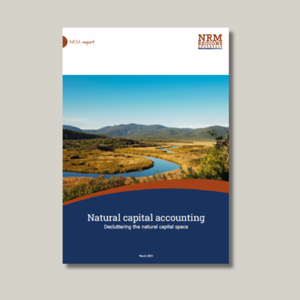Decluttering the natural capital space
A key consideration in connecting accounts to decision making is fitness for purpose. When determining what’s relevant in your context, you will need to balance:
- the type of question you are wanting to answer
- the scale at which you are thinking (farm, region, state, country)
- the level of resources available for data collection and account compilation.
In short, not every question will require the finest level of detailed data across every aspect of natural capital. In addition, by using a natural capital framing, it will be possible to progressively build richer natural capital accounts that answer a broader range of questions.
However, once you get started in the natural capital space, you’ll find that there are dozens of frameworks, initiatives, projects, methods, tools, datasets and the like that all seem relevant. And annoyingly, each of these has its own acronym that, at first glance, means absolutely nothing.
In partnership with NRM Regions Australia, we wrote a handy guide to the ‘blizzard of acronyms,’ placing them in context. In general, most are not competing, and will play a distinct role in the natural capital accounting space.
We’ve identified four groups, each recognising a different area:
- frameworks and standards establish what should be measured
- methods present how organisations can collect and transform data to derive accounting outputs, such as a set of environmental accounts
- tools and data platforms allow organisations to collate data from multiple sources and for methods to be applied
- initiatives and applications provide the motivation for measurement and the link to decision making.







